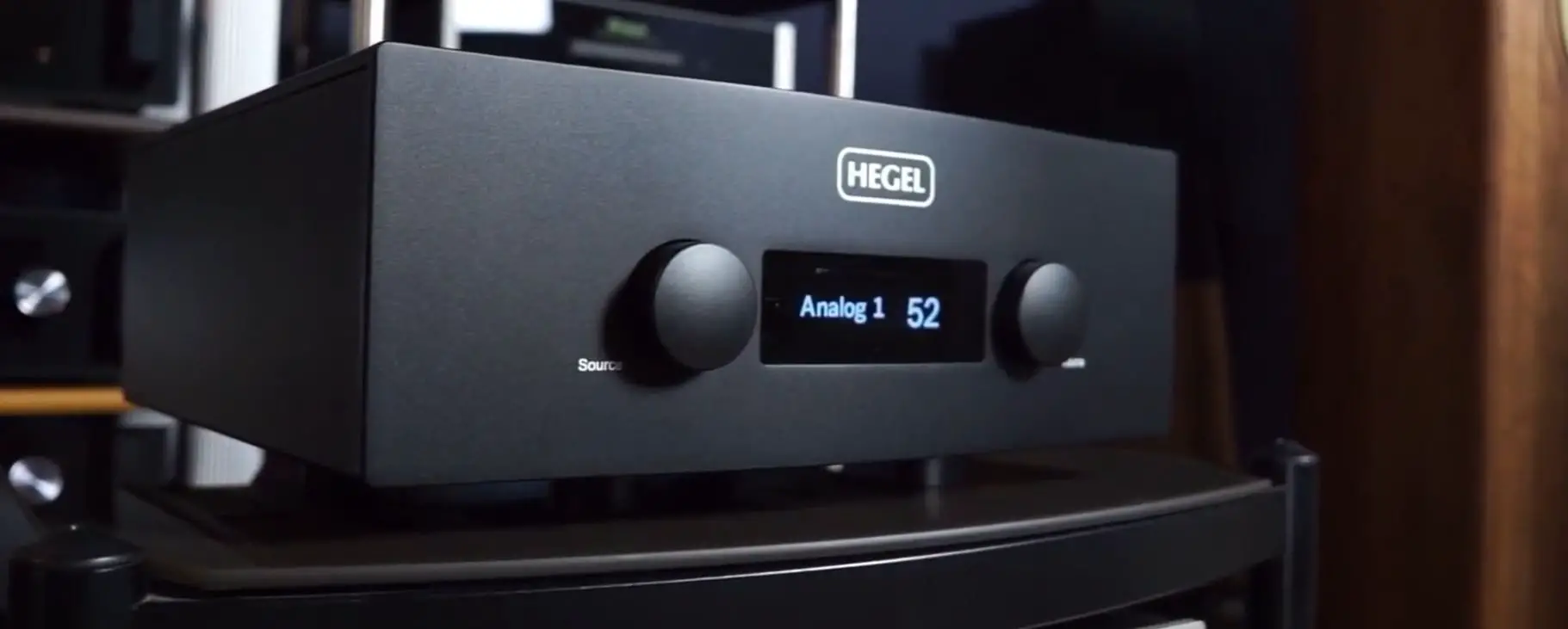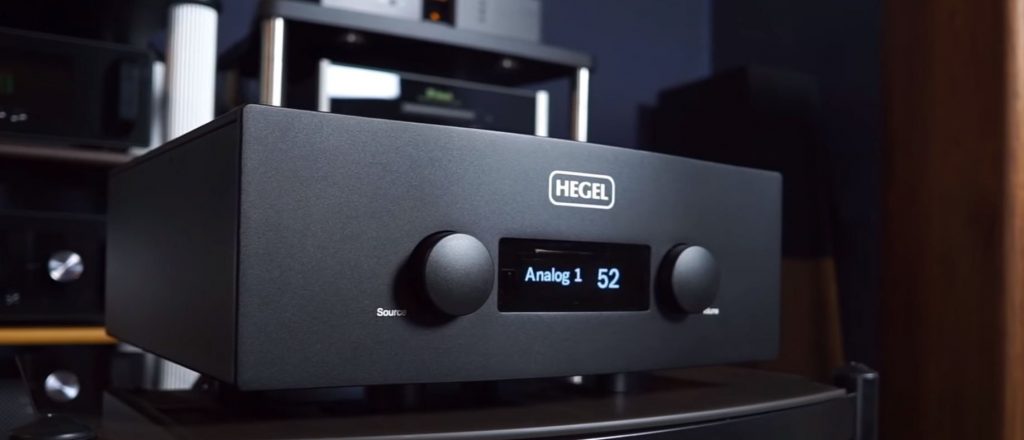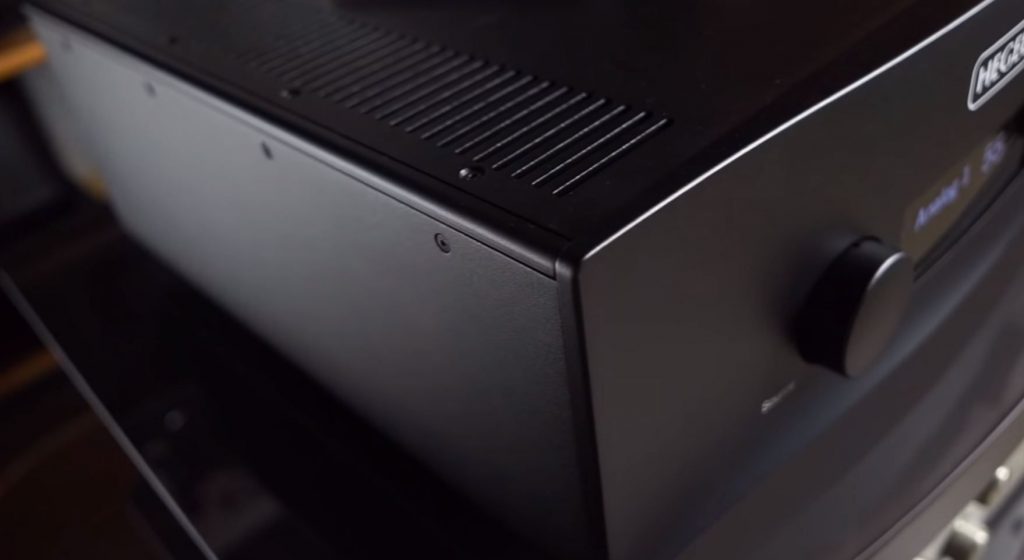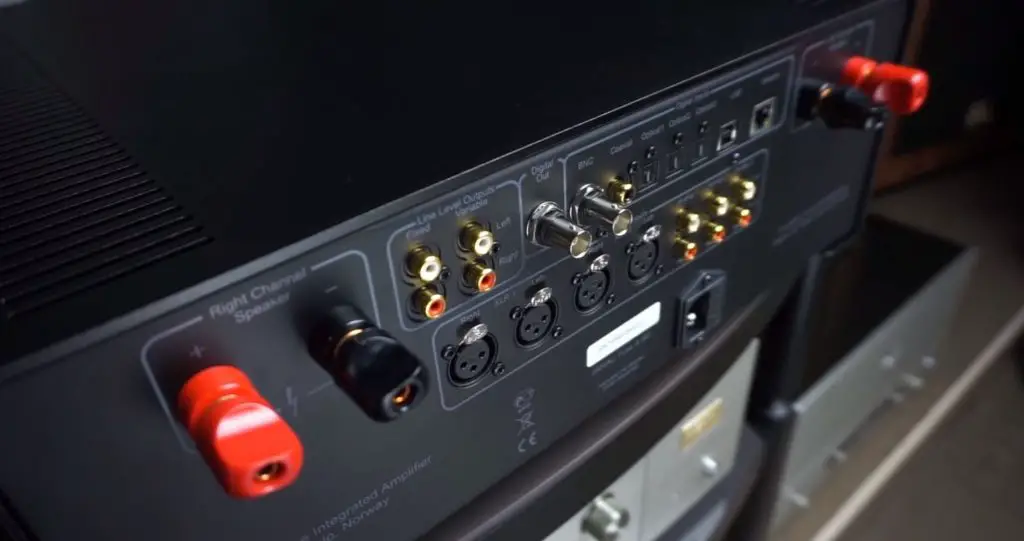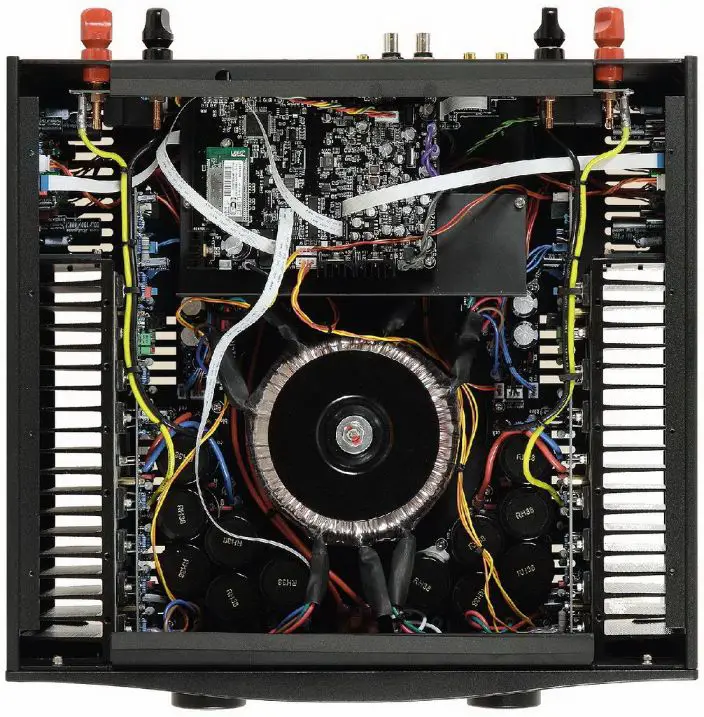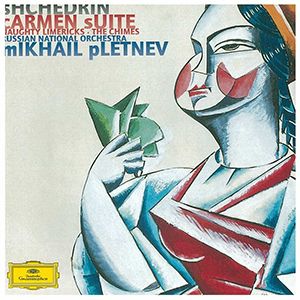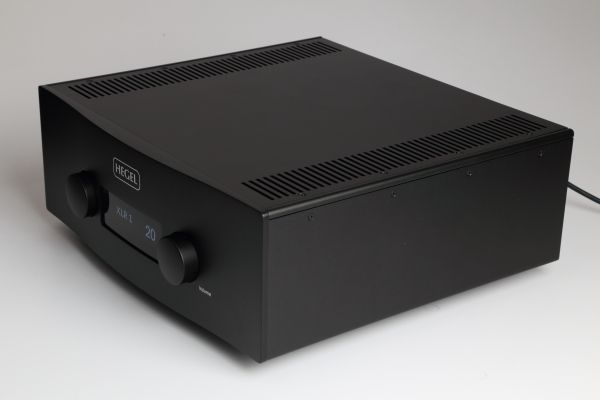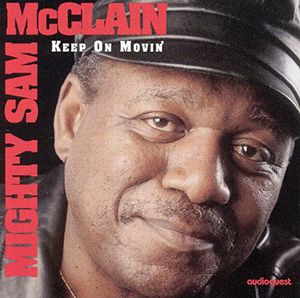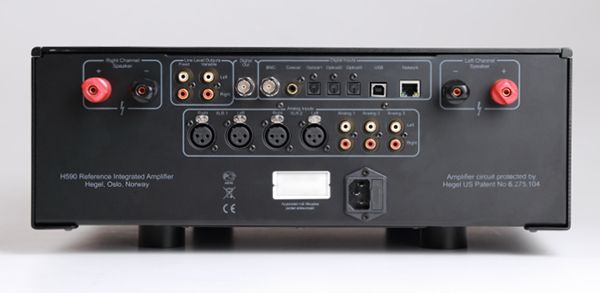Hegel H590 Review
Hegel from Norway is an audio company that pays great attention to music details. In addition to CD turntables, DAC, pre-amp, and power amp, its products also have up to 5 integrated amplifiers product lines, and Hegel H590 integrated amplifier is the jewel of the crown.
All of which have both streaming and DAC functions. Each has a different output power to meet the needs of different users. Previously, we wrote about H90, H190, we will introduce the most powerful H590. Hegel H590 integrated amplifier has up to 300 watts, with a damping factor of more than 4,000, and has a distortion of less than 0.005%.
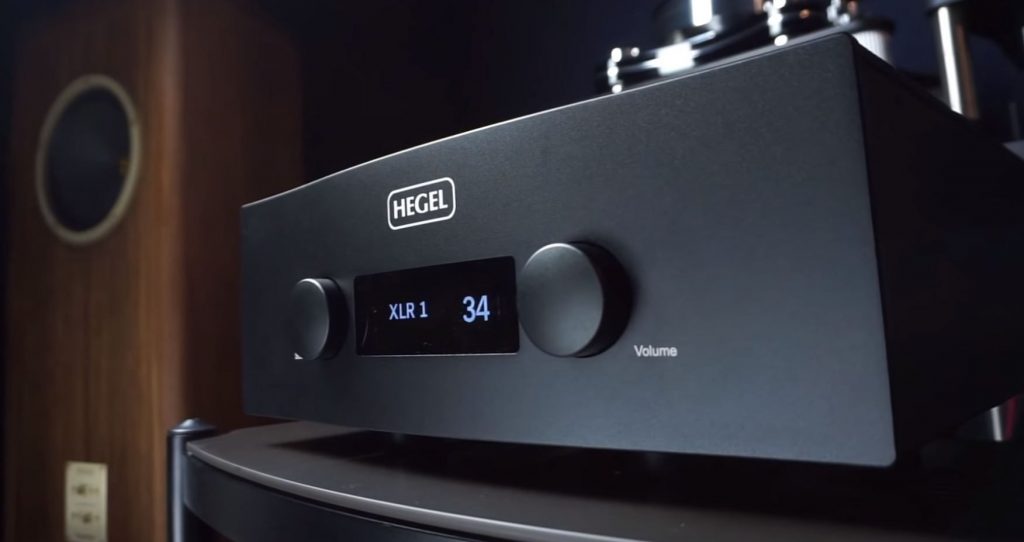
All Hegel’s amplifiers have the same design elements. The outlines are very simple, with a slightly curved panel accompanied by large knobs. There is no luxurious style, but it is very durable and easy to integrate into various interior decoration styles. It profoundly conveys that Norwegians value the essence of life and home and pursue a pragmatic attitude towards life.
The design of H590 certainly does not deviate from the characteristics mentioned earlier. The only difference is that its body is much larger than the models discussed above. It is higher, but the depth is greater, reaching 44.5 cm, and the weight is 22 kg. The H590’s appeal is to pursue convenience, compromise on sound quality, and cope with consumers who have prominent speakers in an ample space.
Design
What are the functions of H590? First of all, it supports DLNA, which can play music files stored in NAS or computers through the connection of the RJ45 network cable, and supports DSD and MQA files. If you have an Apple device, it can also be played by AirPlay.
Hegel H590 also has various DAC input functions, including BNC, RCA coaxial, optical, and USB interfaces, and even provides a set of BNC outputs. The analog input is, of course, no less. In addition to 3 RCA inputs, H590 also has 2 XLR balanced inputs, which can be connected to various sources.
In addition, H590 also has 2 RCA analog outputs, one of which is a fixed volume and the other is a variable volume, allowing users to connect to other equipment more flexibly, providing super-wide expansion.
Let’s talk about the various circuit technologies of H590. The first is DualAmp. It seems that DualAmp is a dual amplifier, but it is not. Instead, each amplifier’s voltage gain stage and current gain stage are made into independent modules.
The signal that comes from the voltage gain stage is connected to the input of the current gain stage, and there is no feedback between the two. Since the voltage gain stage is more sensitive, this design can keep the voltage gain stage away from the high current of the current gain stage, which has lower distortion and better dynamic performance.
The second is the dual power supply. That is in response to the design of DualAmp, allowing the sensitive input and voltage gain stage to use one power supply independently and the current output stage to use another power supply.
The customized transformer used in Hegel H590 has DualPower independent windings. Each uses a high-speed rectifier and sufficient filter capacitors to form a separate power supply, which meets the power required by the above two parts of the circuit. So that can avoid interference of the input stage and the voltage gain stage.
Then comes Hegel’s most important patented technology, SoundEngine, which has now evolved to SoundEngine 2. Its primary purpose is to reduce the distortion produced by the amplifying circuit and maintain the original state of the signal. The method is to reduce distortion through the local error detection system at each level.
With SoundEngine 2 technology, H590 can have both the advantages of Class A amplification and Class AB amplification without the disadvantages of each other. What are the benefits? There is no crossover distortion for class A amplification, and the sufficient power of class AB amplification makes the H590 have lower distortion and better dynamic performance.
H590 uses 12 precisely hand-matched power modules per channel, which can easily generate 300 watts of power (8 ohms). In addition, the damping factor is as high as 4,000, which can easily cope with the most challenging speakers on the market.
H590 has outstanding performance and excellent power and has the consistent good hand feeling of Hegel equipment in operation. There are two large knobs on the Hegel H590 integrated amplifer panel. The left side is the source switch, and the right side is the volume control. The hand feels very good when turning.
Obviously, it was carefully designed. The labels on the panel will tell you the current source position and current volume, and the font is large enough to make it clear at a glance.
The power switch is located under the left side of the panel, which is not visible from the outside. That is also Hegel’s usual method, hiding the switch so that you can’t see it. But, of course, you can also switch the H590 between on and standby through the aluminum alloy remote control.
So in daily use, there is a need to touch. In addition, Hegel H590 has a built-in Control4 system and supports 2-channel IP control, which can be easily integrated into the home automatic control system, making it more convenient to use.
During the test, I mainly used the DAC function of H590 to play music. I connected my laptop to H590 via USB and used foobar2000 to play music files on the computer. The reason for this usage is that Hegel is highly proud of their USB and DAC design, especially the DAC part, using a unique synchronous digital conversion instead of asynchronous, called SynchroDAC.
The Direct Master Clock technology was also designed by Hegel itself, minimizing the time base error. Through the fully balanced DAC circuit, it can maintain the highest dynamic range and reduce distortion.
Sound Performance
I listen to “Carmen Suite“. Through the power control of the H590, the low-frequency trajectory is deep and clear, which firmly grasps the Dynaudio Special 40’s woofers.
The second track, “Dance” immediately brings a compact, high-spirited sense of rhythm. The low frequency of the H590 is high-speed, and the graininess of the bass cello plucking is super clear. It can be seen that the Hegel H590 has not only excellent low-frequency control but also has excellent details.
The dynamic output of the fifth track, “Carmen’s Entrance and Habanera” seem to be slow, but it is stronger than the other. The speed of different frequency ranges is relatively consistent, so the ups and downs from weak to strong appear smooth and unimpeded.
Track 6, “Scene,” is even more impressive. Again, the H590’s high-density, high-cohesive sound quality brings the listener a powerful impact. Another advantage of H590 can be found from this excellent symphony recording: the 3D sense of the sound field is quite good. Regardless of the depth, the front and rear parts, or the positioning and separation, all have a high level.
Then play the old vinyl, Mighty Sam McClain’s “Keep On Movin” album, a blues record compiled with guitar, piano, and bass for the orchestra. Again, through the playback of H590, I heard a very clear music picture.
The shape and position of each instrument can be explained in great detail. The front, middle, and back are vividly remembered, especially the singing of McClain, which is condensed in the middle of the picture. It also makes the music more powerful.
H590 delivers an excellent variety of human voices and musical instruments because its density, quality, thickness, temperature, rich details, textures, and extraordinary cohesion make the listener. It is impossible not to pay attention to the presence of singers and performers. I am naturally attracted to music.
With the characteristics of H590, listening to pop, jazz, and rock music is perfect! And whether it is relaxed listening or serious listening, it can meet your needs.
If you don’t use the computer as the music source, but the streaming function of H590 Amp, what will it be sounded like? So I connected the Hegel H590 to the Internet, switch the source gear to Network, and then open the BubbleUPnP remote control app from the mobile to play music files stored in the NAS.
At this time, the sound streamed out is easier, more open, and smoother, showing another nice. Also, compared with laptops, the sound of network streaming seems to be not so thick, and the density is not so high.
The thickness and density of H590 are already perfect, and it sounds softer and smoother and a little more. The sense of agility and elegance makes the music sound lighter and lively, and the sense of comfort is increased. I can feel the H590’s rich details and layers, well-organized frequency band structure, and clear 3D sound field. There is no shortage of advantages.
Conclusion
In general, Hegel products have complete functions, convenient usability, a simple-line-style appearance, and high-quality sound performance. Hege H590 network streameris a complete manifestation of these characteristics, plus an advantage: the unobstructed driving force.
Users do not have to worry when choosing a speaker. Just select the speaker they like. Perhaps for audiophiles, what’s better is that Hegel has up to 5 integrated amplifiers product lines with different powers to choose from.
If your listening space is particularly large, speakers are challenging to drive, and you have enough budget, then I believe Hegel H590 will be the most suitable choice.
Hegel H590 Specs
- Power output: 2 x 301 W into 8 Ω, Dual Mono
- Minimum load: 2 Ω
- Analog Inputs: 2 x balanced (XLR), 3 x unbalanced (RCA)
- Digital Outputs: 1 x coaxial (BNC)
- Digital Inputs: 1 x coaxial (BNC), 1 x coaxial (RCA), 3 x optical, 1 x USB, 1 x Network
- Line level Output: 1 x unbalanced fixed (RCA), 1 x unbalanced variable (RCA)
- MQA supported inputs: USB
- Frequency response: 5 Hz – 180 kHz
- Signal-to-noise ratio: More than 100 dB
- Crosstalk: Less than -100 dB
- Distortion: Less than 0.005% @ 50 W/8 Ω/1 kHz
- Intermodulation: Less than 0.01% (19 kHz + 20 kHz)
- Damping factor: More than 4000 (main power output stage)
- Dimensions incl feet: 17,1 cm x 43 cm x 44,5 cm (HxWxD), 22 kg unit weight
- Dimensions (US): 6.74″ x 16.93″ x 17.52″ (HxWxD), 48.51 lbs unit weight
